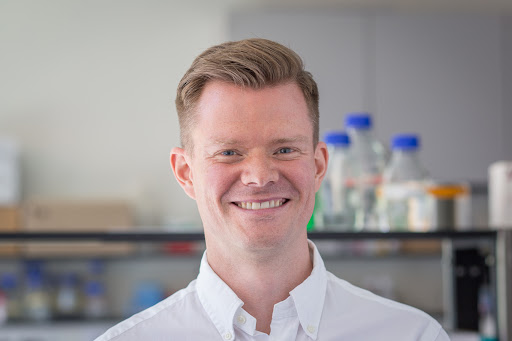OICR welcomes Dr. Hartland Jackson back to Toronto as Lunenfeld-Tanenbaum Research Institute and OICR’s newest investigator
While he was a doctoral student developing experimental models of breast cancer, Dr. Hartland Jackson recognized the enormous potential impact of multiplexed imaging and single-cell technologies. If we could see how different cells interact within a tumour, what could we discover?
This question fueled his research over the last half decade, taking him to Switzerland to develop advanced imaging methods alongside experts at the University of Zurich. Now, returning to Canada, Dr. Jackson plans to collaborate across disciplines and sectors to apply this technology to solve more scientific and clinical questions. Here, he discusses his goal of bringing the benefits of this technology to more patients in Ontario and around the world.
What was your main research focus in Switzerland?
HJ: In a nutshell, I was developing a new technology, called imaging mass cytometry, which allows us to visualize and analyze tumour samples in more detail than ever before.
When I joined the research group at the University of Zurich, they had developed a prototype imaging system. My role was to take this system and be the first to apply it to a clinical problem. Ultimately, I helped shepherd the system from a prototype to a commercial product that is now used around the world.
What clinical application did you focus on?
HJ: I focused on investigating how this technology could help in the diagnosis and prognosis of breast cancer. Through this process, we made a lot of progress in developing analysis methods and optimizing the system. Whereas traditional imaging methods could see three or four markers on a cell, our system allows us to see 40 markers at the same time. With this technology and imaging system, we could visualize how different cells were organized within a sample, which revealed new types of breast cancer.
In addition to this discovery, my work showed that imaging mass cytometry can reveal information within clinical samples – meaning information that may be useful for patients. We pushed the boundary on what can be done with this system and now it’s used around the world to study different human diseases.
Interestingly, the technology that I was working on was an adaptation of an earlier technology developed in Toronto by DVS Sciences, which was supported in part by OICR. My plan was to work with the imaging experts in Switzerland and bring these developments back to the place where the technology was created and is now manufactured as a commercial product by Fluidigm.
Is that what brought you back to Canada?
HJ: Yes, one of the reasons I’ve returned to Canada is to bring this expertise back to Toronto. In addition to that, the research community here is very impressive. The universities, research institutes and hospitals are all tightly knit. This makes for an excellent environment to develop new technologies that can address clinical health challenges. I find that researchers here are like-minded in their goals and collaborative spirit. We enjoy working through technical challenges and delving into the mysteries of cell biology, and – at the same time – working on research that really matters to patients.
What will your future research focus on?
HJ: I plan to continue developing some of the methods that I was working on in Europe while expanding my research in a few exciting areas.
We’re looking to apply this technology to different types of cancer and different diseases in collaboration with clinician scientists. I’m interested in applying this technology in drug clinical trials to help us understand how patients respond to different therapies. In parallel, I look forward to using this technology to study experimental model systems to better understand how cells are communicating with each other and what goes wrong in the communication between cells during cancer development.
Our work has shown what this technology is able to do and that has only opened more avenues for future research. I’m excited because these new applications are now within our reach. To date, collaborations have allowed me to make more progress than I could have ever made on my own and I look forward to building new collaborations to make new discoveries in the future.

